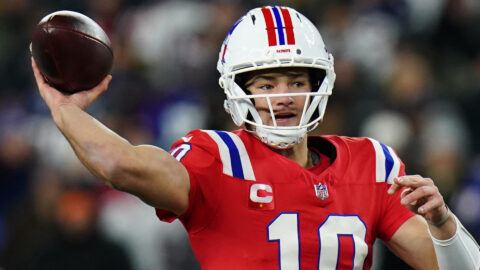Locked in a 2-2 game in the finale of the Red Sox' 10-game road trip, Josh Beckett started the bottom of the fifth inning in Anaheim by getting Reggie Willits to pop to second. First out of the inning, right?
As second baseman Bill Hall began to struggle to locate the ball, the answer to that question became a bit more uncertain. When the ball fell about four feet from Hall, who was blinded by the sun, a hustling Willits coasted all the way to second for a gift double.
Willits scored later in the inning on a sacrifice fly, giving the Angels the go-ahead run with a hearty assist from the elements.
Such is life in the game of baseball, where all but one team plays outdoors (not counting the several teams who inhabit stadiums with retractable roofs). The rain and wind can always come into play, but the sun wreaks the most havoc.
"There's no glasses in the world that can block out the sun, none that we can wear on the baseball field, anyway," Hall told reporters after the game, which Boston ended up winning 7-3. "If the ball goes into the sun, glasses aren't for looking directly into the sun. You're not going to see the ball directly in the sun anyways."
That's why the all-time blooper reel is littered with grown men in the prime of their professional athletic lives cringing away from a small white ball as if they're scared for their lives.
Of course, lives can be at stake if protection from the sun is not taken. Baseball players are largely covered up, with uniforms that expose only their arms and hats that shade their faces. Too many people go through their daily routine without such coverage, and end up paying the price.
Long days in the sun can induce heat stroke and dehydration, along with more serious long-term risks. Extended exposure to the ultraviolet radiation that comes from sunlight increases a person's risk for skin cancer. According the American Cancer Society (ACS), risk of skin cancer parallels the amount and strength of UV radiation a person is exposed to. Limiting sun exposure, especially midday when the sun is the hottest, is the best way to reduce the risk of skin cancer. Unfortunately, staying inside is simply not an option for people who make their living working all day in the sun.
For people who cannot avoid sun exposure, the ACS recommends other ways to stay "sun safe." Putting on sunscreen before going outside, even on hazy and cloudy days, helps protect a person's skin from even the strongest sun. As the day continues and the sun gets hotter, however, it is important to reapply at least every two hours. According to the ACS, "clothes vary in how much they protect you. … Dark colors are better than light colors. A tightly woven fabric protects better than loosely woven clothing." Drinking water and finding shade will help you avoid heat stroke and dehydration. The dangers of sun exposure can be limited with the proper precautions, measures that are extremely important to take.
On the field, bright sun can be treated with disdain, as it likely was by Hall that day, or used to one's advantage. Pitchers throwing from a sun-splashed mound into a batter surrounded by shadows often can find an edge — it's difficult for the hitters to pick up pitches in changing light.
One of the more famous instances involving the Red Sox and the sun occurred in the 1978 one-game playoff with the New York Yankees. With the Yankees holding a 5-4 edge in the bottom of the ninth inning, Jerry Remy lined one toward Lou Piniella in right field at Fenway Park.
Piniella never saw it, but he acted as if nothing was wrong, preventing the runner on first, Rick Burleson, from breaking on the hit. Burleson was only able to reach second base when Remy's ball fell in for a single. Had Piniella not pulled off such a clever decoy, Burleson would have made it to third and likely scored the tying run when the next batter hit a long fly ball.
The sun giveth, the sun taketh away. In baseball, and in life.



